Revolutionary Print-on-Demand Solutions Transform How Smart Businesses Slash Waste and Storage Costs
In today’s competitive business landscape, companies are discovering that traditional printing methods are draining their budgets and filling their storage rooms with unused inventory. Print-on-demand strategically reduces document waste by allowing businesses to create products only when there is demand for it, without having to invest in large quantities upfront. This revolutionary approach is transforming how organizations manage their printing needs while dramatically cutting costs and environmental impact.
The Hidden Costs of Traditional Printing
Traditional printing methods force businesses into a costly cycle of overproduction and waste. Traditional, offset printing requires individual set-up for each project and most offset printers require a minimum quantity for each project. This creates a challenging scenario where companies must order hundreds or thousands of copies to meet minimum requirements, often resulting in significant unused inventory.
This often results in significant unsold inventory, which not only leads to waste but also increases storage costs and the environmental impact of handling excess products. The financial burden extends beyond the initial printing costs to include warehousing expenses, insurance, and the eventual disposal of outdated materials.
How Print-on-Demand Eliminates Waste
Print-on-demand technology fundamentally changes this equation. Because it doesn’t require any set-up and uses standard paper sizes, it costs the same per unit to produce one copy as one thousand. This flexibility allows businesses to order exactly what they need, when they need it.
Print-on-demand operates on a made-to-order basis, ensuring that no products are manufactured until confirmed orders are received, effectively eliminating the waste associated with overproduction. The environmental benefits are equally compelling, as POD eliminates inventory waste while minimizing emissions with efficient production and localized shipping.
Storage Cost Reduction Through Smart Technology
One of the most significant advantages of print-on-demand solutions is the dramatic reduction in storage requirements. Only printing what is needed and when it is required eliminates the requirement for storage space, which not only reduces material usage but also translates into a cost-saving alternative for businesses.
For businesses in Northern Virginia, services like Digital Printing in Prince William County, VA demonstrate how local companies can benefit from on-demand printing solutions. These digital printing services are designed around the reality of education – tight deadlines, tighter budgets, and the need for materials that actually help students learn, with educational pricing programs that recognize every dollar saved on printing can go toward student supplies.
Environmental Impact and Sustainability
Beyond cost savings, print-on-demand solutions offer substantial environmental benefits. Sustainable print on demand eliminates inefficiencies by printing only the exact quantity needed, minimizing waste and using resources more responsibly. The technology also supports the use of eco-friendly materials, with many print on demand suppliers offering products made from sustainable and environmentally-friendly materials such as organic cotton, recycled paper, and non-toxic inks.
The carbon footprint reduction is significant. Print on demand reduces the need for transportation and storage of products, which can contribute to a reduction in carbon emissions. This aligns with growing consumer demand for sustainable business practices, as approximately 80% of consumers say they’re willing to spend more for sustainable products.
Operational Efficiency and Flexibility
Modern digital printing technology offers unprecedented flexibility for businesses. The technology behind digital printing means faster setup, lower costs for small runs, and the ability to customize every single piece if needed. This is particularly valuable for businesses that need to respond quickly to market changes or customize materials for specific audiences.
On-demand print technology makes it easy for businesses to quickly turn campaign ideas into reality, track responses and implement any necessary adjustments to improve campaign results. The ability to make real-time adjustments without costly setup changes gives businesses a competitive advantage in rapidly changing markets.
Real-World Applications and Success Stories
The practical applications of print-on-demand solutions extend across various industries. Companies implementing POD technology have decreased their inventory costs while increasing revenue by only printing what they needed, reducing waste and offering a wider variety of products without taking up more space.
Educational institutions particularly benefit from this approach. Most standard digital printing jobs can be completed within 24-48 hours, with same-day service available for rush orders, whether you need a single poster for tomorrow’s lesson or 200 banners for the school carnival.
The Future of Business Printing
As businesses continue to prioritize sustainability and cost-effectiveness, print-on-demand solutions represent the future of commercial printing. By embracing on-demand packaging and just-in-time delivery, businesses can align with modern manufacturing principles, optimize operational efficiency, and contribute to a more environmentally conscious future.
The technology continues to evolve, with emerging technologies playing a pivotal role in enhancing sustainability, including automated production systems and AI-driven inventory management that streamline processes to ensure items are only produced when ordered.
For businesses looking to reduce waste, cut storage costs, and improve their environmental footprint, print-on-demand solutions offer a practical and profitable path forward. The combination of cost savings, environmental benefits, and operational flexibility makes this technology an essential consideration for any organization serious about sustainable business practices and efficient resource management.
